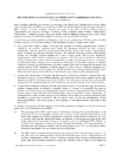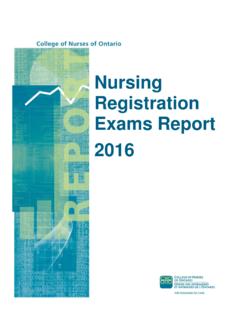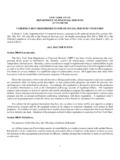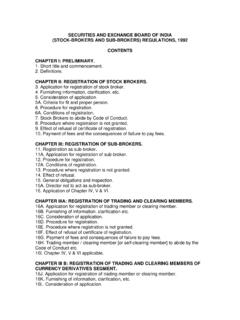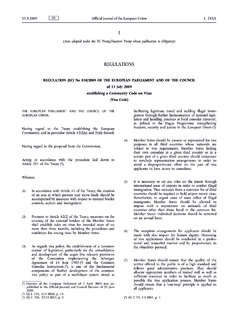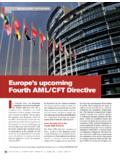Transcription of Optimizing Drug Registration in China: Category I …
1 WHITE | April 2013 Optimizing drug Registration in China: Category I RouteOPTIMIZING drug Registration IN CHINA: Category I ROUTE 2 EXECUTIVE SUMMARYWith a population of billion and a pharmaceutical market growing at nearly 20 percent per year, China offers both huge opportunities and challenges for drug developers seeking to optimize development and product Registration timelines. Multinational pharmaceutical companies are conducting more clinical trials in China as part of their international multicenter development programs.
2 Chinese data from global multicenter studies now support the most common route to product Registration in China the Category III route, an application for an import drug , the Category III route to Registration may not be the optimal pathway to the Chinese market for pharmaceutical products, in light of year-long review times required for clinical trial applications and the timing of subsequent marketing application submission and approval. The regulatory pathway for full Category I new drug Registration may offer advantages that compensate for the additional time and development work required.
3 In this paper, PPD details advantages and disadvantages of the Category I drug Registration IN CHINA: Category I ROUTE 3 INTRODUCTION China is on track to become the world s largest economy by 2050 and already boasts the world s fastest growing pharmaceutical market. Now ranked third behind the United States and Japan, China s pharma-ceutical sales soared to $ billion in 2011, propelled by a four-year annual growth rate of percent. IMS Health projects that China will sustain a 15 percent to 18 percent growth rate over the next four years and replace Japan in the number two position, with sales exceeding $155 billion by to China s enormous market and to its vast patient populations to support drug development is fast-becoming an imperative for pharmaceutical research and financial success.
4 In 2011, China sales of the top 10 multinational pharmaceutical companies were estimated at more than $20 However, China also poses enormous challenges for clinical development and product Registration . Success in China depends especially upon navigating the country s evolv-ing regulatory landscape; developers must balance the great advantages of China s large patient populations and efficient study enrollment with obstacles posed by Registration pathways for new and existing drugs. Introduction in China of drug products already approved in other markets represents a major oppor-tunity for multinational pharma companies.
5 Only 14 of the 140 new molecular entities approved in the world between 2006 and 2010 were available in China in 2011, compared to 39 in India and 91 in the Closing this gap means health gains for China as well as financial gains for multinational pharmaceutical China Food and drug Administration (CFDA), formerly the State Food and drug Administration, considers drugs approved and marketed in other countries as new drugs in China. The CFDA designates previously approved therapies as Category III import drugs and requires clinical data from trials conducted in China to support an application for an import drug license (IDL).
6 This is the only option for drugs already marketed in another country. However, for drugs that have not been approved anywhere yet, developers might choose to conduct a full clinical development program in China and submit a Category I new drug applica-tion to earn market approval that may be achieved several years earlier when compared to the Category III route. In this paper, PPD compares these two strate-gies and discusses potential advantages of the Category I drug Registration IN CHINA: Category I ROUTE 4 India, 18%China, 19%Rest of Asia, 23%All of Asia, 60%Africa, 15%Europe, 11%CHINA S REGULATORY LANDSCAPE: SIMILAR BUT DIFFERENTIn China, multinational companies operate in a climate of rapid change and increasing harmonization with research standards and processes of mature markets.
7 They also encounter some dramatic differences com-pared to the regulatory processes of the Food and drug Administration (FDA), the European Medi-cines Agency (EMA) and other major drug regulatory FrameworkChina is working to improve and standardize drug research and regulation and has issued technical guide-lines pertaining to chemical drugs, biologics as well as traditional Chinese medicines. The CFDA, which emerged in reorganization in 2003, establishes require-ments for product Registration , conducts oversight and monitors adverse events, enforces provisions for drug recalls and directs changes to drug import licensing.
8 CFDA regulation for new drug development is mod-eled on the FDA s development pathway. To conduct clinical trials, CFDA requires a clinical trial application (CTA), similar to a FDA investiga-tional new drug (IND) application. A three-phase clinical evaluation program is required to demonstrate drug safety and efficacy. Developers then submit a new drug application (NDA) for CFDA review, which includes review by the agency s Center for drug Evalu-ation (CDE) and National Institutes of Food and drug Control (NIFDC).
9 3 Key Differences: GCP Standards, Research Timelines and CMC RequirementsThe CFDA has developed its own standards for Good Clinical Practices (GCP), Good Laboratory Practices (GLP) and Good Manufacturing Practices (GMP). The CFDA s GCP standard has been evolving since its establishment in 1999; it was revised in 2003, and a guideline regarding ethics committee review was issued in 2010. Gaps remain between CFDA-GCP and ICH-GCP. Multinational drug developers must select study sites carefully and ensure that CFDA-GCP licensed investigators and research staff fully understand and comply with ICH-GCP as well.
10 A challenge for multinational pharmaceutical compa-nies conducting trials in China results from differences in China s review times, which are not aligned with those in other countries. Long review timelines for a CTA can erase timeline gains achieved by rapid patient enrollment. CFDA technical evaluation and admin-istrative review takes from seven to twelve months, compared to 30 days for the FDA s IND review and 60 days for an EMA CTA After a CTA is obtained, there is no clear regulation or guidance pertaining to amendments.

